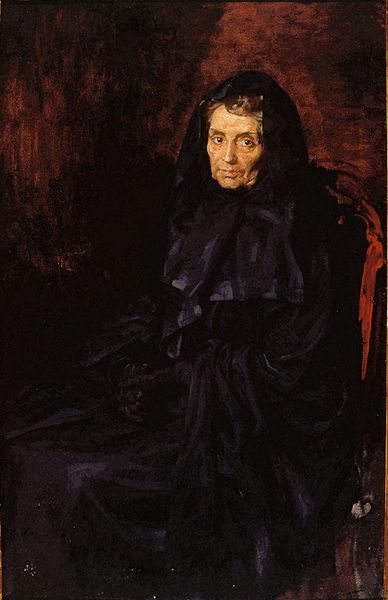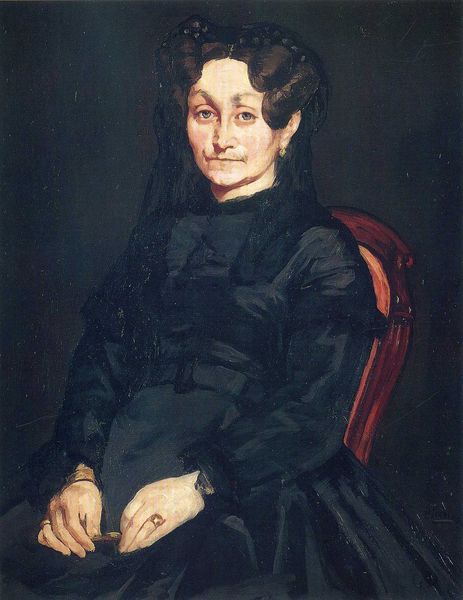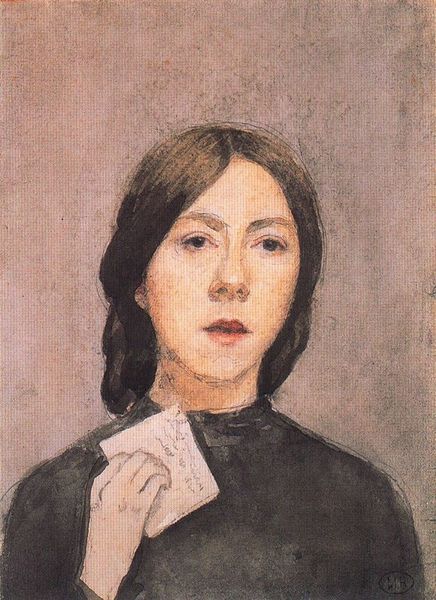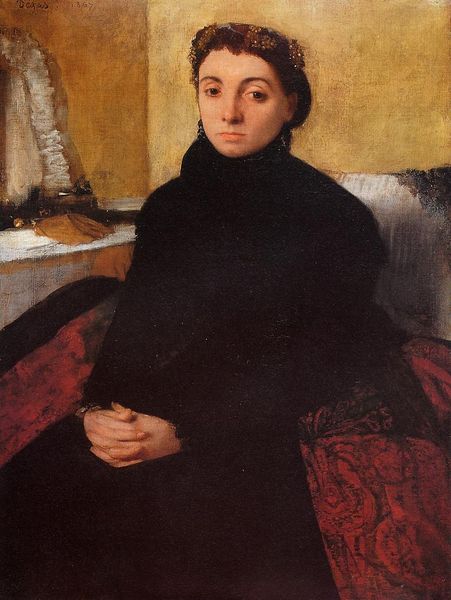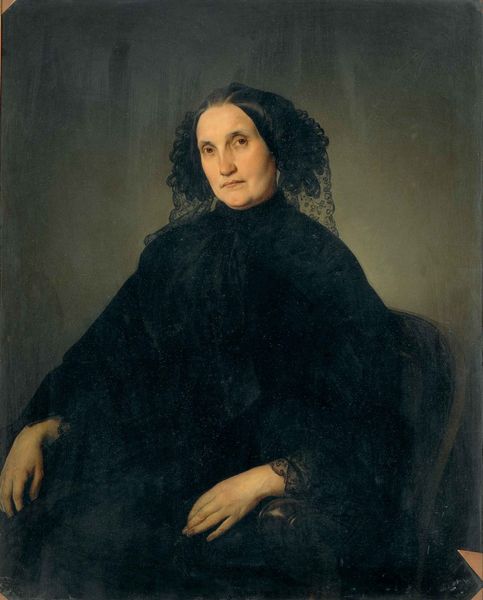
#
portrait
#
head
#
portrait reference
#
animal portrait
#
animal drawing portrait
#
portrait drawing
#
facial portrait
#
forehead
#
portrait art
#
female-portraits
#
fine art portrait
#
self portrait
#
celebrity portrait
#
digital portrait
Dimensions: 81 x 60 cm
Copyright: Public domain US
Editor: Here we have Picasso's "Celestina," painted in 1904. It’s a portrait, quite striking and almost severe in its mood. What can you tell us about it? Curator: This portrait, created during Picasso’s Blue Period, depicts a one-eyed woman, and its significance lies deeply within the socio-political context of early 20th-century Spain. "Celestina" wasn't just a name, but a reference to a literary character: a procuress. Editor: A procuress? Curator: Exactly! By titling the work "Celestina", Picasso references the figure of a go-between, and this connects to larger societal anxieties around gender, class, and marginalized figures within that historical period. She's not simply a woman; she's a representation of those pushed to the fringes. Does that altered gaze tell us something about perspective, about how society "sees" these figures? Editor: It’s interesting to think about her role not just as a person, but as a social commentator within Picasso’s work. Curator: Precisely. Her very image challenges the idealised beauty standards of the time, forcing us to confront the realities of aging, poverty, and the lives of those often ignored. Think about the power dynamics inherent in looking-- who gets to look, and who is being looked at? This shifts how we engage with the portrait, wouldn’t you say? Editor: Definitely. I see the painting in a new light now, realizing it says more than what I originally understood by just observing the portrait. It really encourages us to question societal roles. Curator: Exactly, and how those roles were, and continue to be, represented in art. This piece invites us to confront uncomfortable truths, blurring the lines between aesthetics and social commentary.
Comments
No comments
Be the first to comment and join the conversation on the ultimate creative platform.
